Resolve Marine Group
laska’s thriving maritime industry is supported by a variety of environmental companies and other organizations that help clear industrial debris from the state’s waterways and shoreline. These entities perform a multitude of duties to keep Alaska’s ecosystem as pristine as possible while combating a never-ending problem.
Marine industrial debris—which often makes its way to the land—is a significant problem in Alaska. It involves every type of waste material that you can think of: from wrecked airplanes to fishing boats and hurricane debris, says Chris Pallister, founder of Gulf Keepers of Alaska (GoAK). So what’s the most common type of marine debris Pallister sees? “By tonnage, it’s commercial debris: massive nets, big bundles of line, all kinds of buoys and fenders, fishing totes, drums, barrels, baskets, and crates,” he says. “Every time a boat goes down, you wind up with Styrofoam and busted boat components.”
By quantity, consumer plastic is the most troublesome kind of debris that invades Alaska’s waterways and coastlines. “We are dealing with massive amounts of consumer plastics,” Pallister says. “Every time there is a catastrophe in the western pacific, it winds up on our side of the ocean because of the currents and wind.”
The plastic comes from everywhere, and it’s a horrible problem that also impacts Alaska’s wildlife. Sea birds often endanger themselves eating plastic while sea lions and harbor seals have been known to chew on potentially harmful bleach bottles. “It’s an incredible environmental disaster that’s had far too much effort in combatting it,” Pallister says.
Todd Duke, general manager of compliance services for Resolve Marine, attributes much of Alaska’s marine industrial debris to what he refers to as the “Amazon effect.” People quarantined at home for the past year have been using their disposable income to shop on Amazon.com. Mobile containers loaded with their purchases have been placed on ships bound for Alaska waters, but some of them never reached their destination. “In the past year, there have been at least five significant cases where the weather has been rough, and the seas have been violent. Lashings have broken and shipping containers have fallen overboard.”
He continues: “Who knows what is inside of the containers; they may contain anything from tennis shoes to electronics. And a lot them, presumably, contained hazardous materials.”
Marine debris is essentially pollution, and all the waste material that is out there is not coming from ships, says Buddy Custard, president and CEO of Alaska Chadux Network. The problem originates from two sources: ships and pollution from the land base—from population centers. But marine debris isn’t just an Alaska issue; every coastal environment experiences this problem, says Custard, who lives in Juneau. He explains: “You have storms that throw debris from the land into the ocean, then the current takes it all over the place. Debris migrates and respects no country’s borders. For example, 10 to 20 million tons went into the water after the tsunami in Japan. A lot of that sank, but about 1.5 million tons moved across the ocean, and much of that ended up on Alaska’s shores.”
Alaska’s environmental companies and other organizations are diligently working to address the issue of marine industrial debris. The nature of their work varies, according to the waste material being retrieved. Resolve Marine, for example, is primarily an emergency response, salvaging, and cleanup company. As a contractor to the US Coast Guard, the company has a significant amount of experience cleaning up debris in Alaska’s waterways, mostly after hurricanes. “In a post-hurricane case, where there’s a lot of debris, one of the first things we will do is some over-flights and get an idea of where the stuff is and what it is,” Duke says. “Then we make a plan for the best way to extract it.”
Typically, Resolve Marine establishes an environmental unit during the cleanup project. It also has a scientific support coordinator from the National Oceanic and Atmospheric Administration join the team. “They can look at the flora and fauna and give us some best practices,” Duke explains. “We want to look at the environmental resources at risk and make sure we don’t do any more damage or have a plan to mitigate that damage.”
NRC Alaska (US Ecology)
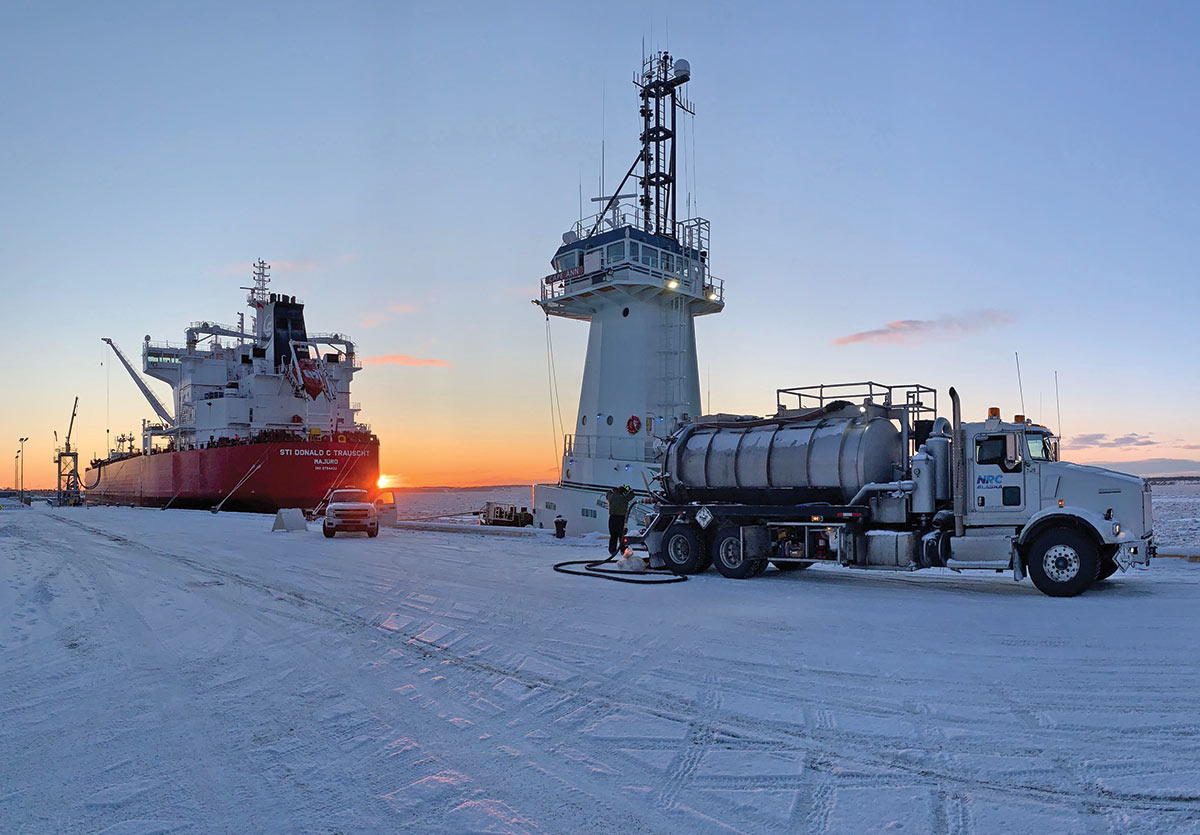
NRC Alaska (US Ecology)
Resolve Marine has a large team of personnel available to work on cleanup projects. Some of them may be divers who go down and rig the debris with straps or cables and pick it up with a crane. The majority of the debris the company removes is vessels, along with fuel tanks. “If it’s a vessel, the first thing we want to do is remove any fuel that is on there,” Duke says. “As we’re removing the debris, we don’t want to tear open any tanks and create a big spill.”
The equipment that Resolve Marine uses depends on the job at hand. Surface supply diving, for instance, can involve everything from diving equipment to boats, barges, and cranes. “There’s a person in their dive suite with a helmet on, and we pump air down to them,” Duke says. “It’s more complicated than the scuba diving that most people are familiar with.”
The company also employs pumping equipment to remove fuels and oils, and it always carries an assortment of cutting equipment and torches to reduce the size of the debris when needed. Roller bags are another important item that cleanup crews use. “This is a very heavy-duty rubber bag that we can slide underneath a big pile of debris like a barge or boat and inflate it with an air compressor,” Duke explains. Then we can pull that vessel or whatever back into the waterway and refloat it. We use the roller bag on the marsh grass because it causes less damage. We also have some inflatable bags that look like parachutes or pillows to bring something to the surface that may be sunken.”
Alaska Chadux Network
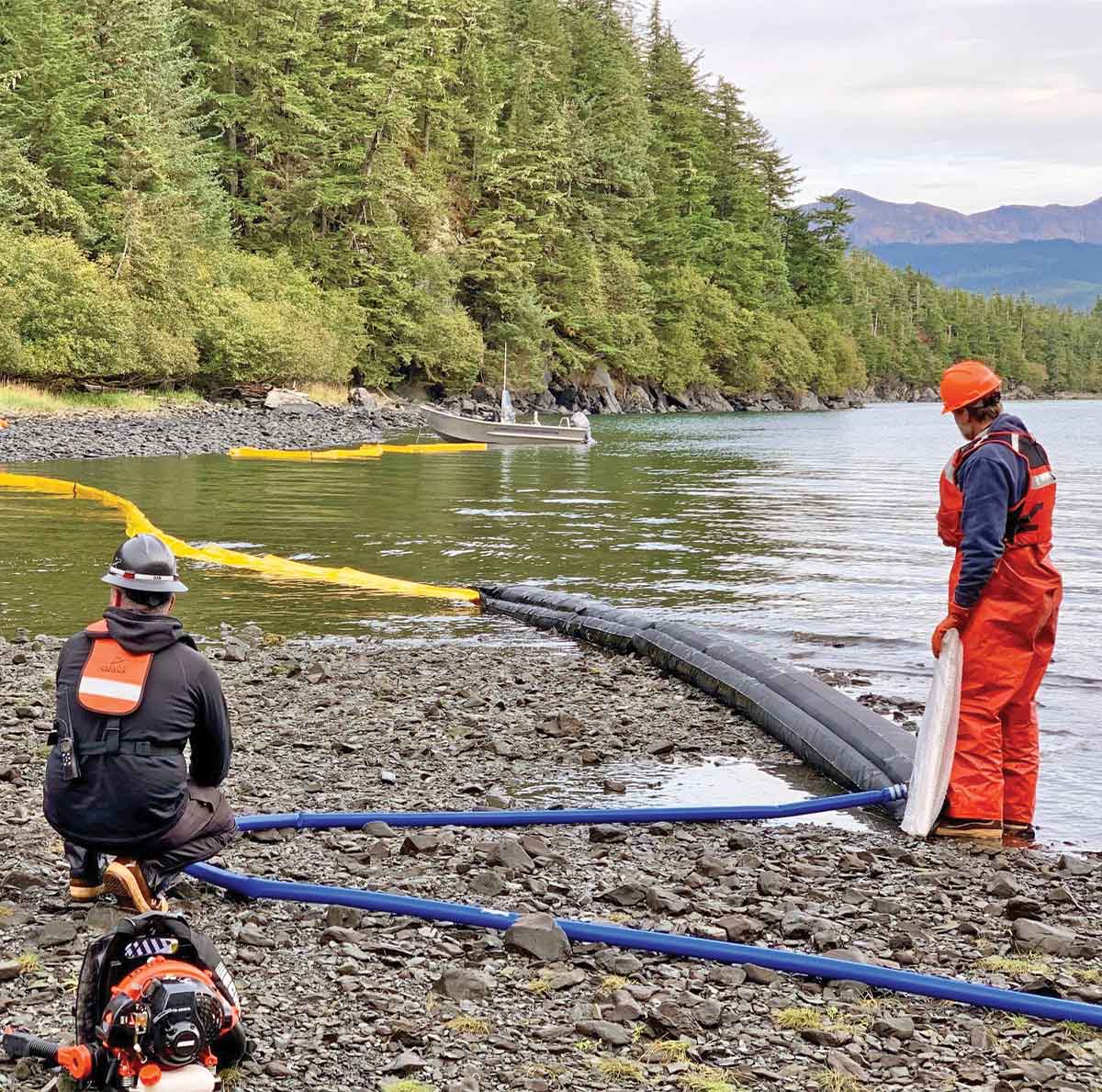
Alaska Chadux Network
Resolve Marine relies heavily on aircraft for its cleanup work and maintains its own fleet of planes, including Pilatus PC-12 passenger and cargo aircraft. It also has a float plane to conduct surveys and to get people on the ground to take a closer look at debris when needed. In addition, the company frequently leases helicopters, which are helpful for lifting and flying out debris.
GoAK primarily focuses on shoreline cleanup involving everything from stranded fishing nets to plastics. It doesn’t have the capabilities or finances to remove large debris like wrecked boats, but the company’s cleanup crews pick up a substantial amount of plastics each year—400 to 500 tons from mid-May to mid-September. And while the 2011 tsunami in Japan contributed to much of the garbage, it can’t be blamed for all the refuse, Pallister says. “The tsunami doubled the volume of debris, but it didn’t double the tonnage,” he says. “There was a tremendous supply of debris on our beaches long before the tsunami hit.”
Initially, GoAK began its cleanup work with volunteers, but the problem became far too vast for volunteers to address. “Over the years, we realized that we can’t effectively do this unless we do this on a really big scale, which requires a lot of money,” Pallister says.
Alaska Chadux Network
Alaska Chadux Network
So GoAK secures government grants and other funding to support its painstaking efforts. Consequently, the organization has removed more than 3 million pounds of plastic debris from more than 1,500 miles of critical and sensitive coastal habitat.
GoAK’s work often takes place on remote beaches with no road access, which prevents the use of heavy equipment. “Even if you could [use heavy equipment], you wouldn’t because of the potential damage to the environment,” Pallister says. “So it’s all handwork. When we’re doing a full-scale cleanup, we’ll have two guys on chainsaws all day. It’s not a job for light-weights; it’s dangerous.”
Just getting to the shore can be dangerous for cleanup crews. Pallister explains: “For a long time, we were trying to do this from our small boats and use our floats. You’re subject to all weather, and the surf is beating you around. We’ve had inflatables flip several times with people in them.”
So the company opted to use helicopters, which are expensive—about $4,000 a day for a small helicopter—but they increase efficiency and safety. “The helicopters can land right where we have our boats and be on the beach in ten minutes, instead of an hour-long boat ride every day,” Pallister says. “They are handy for moving heavy stuff that we can’t move by hand. Plus we’ve used helicopters to fend off brown bears.”
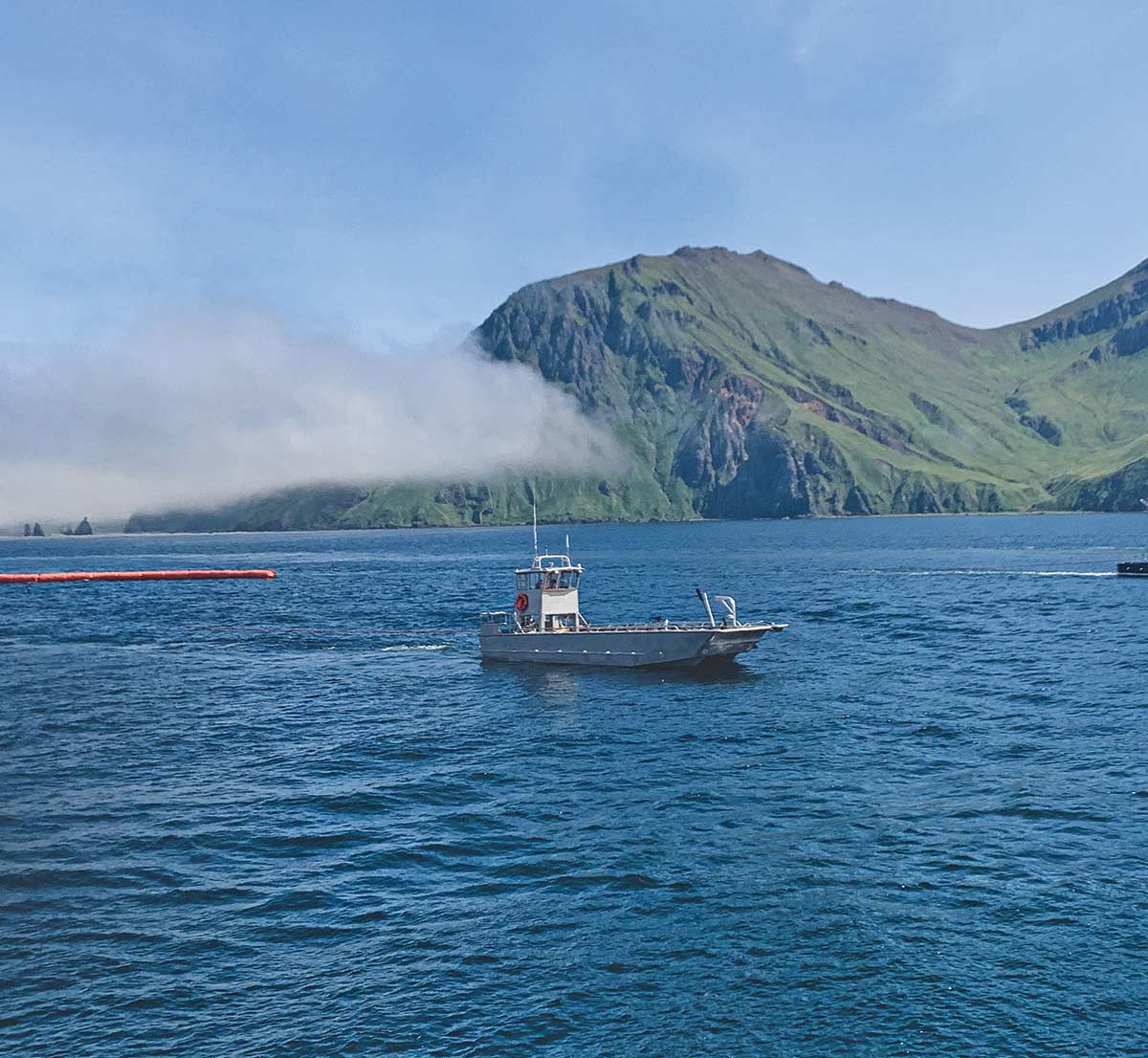
In its marine debris cleanup activities, Alaska Chadux Network often responds to oil spills from a ship or facilities that deal with oil, such as a tank farm. The company uses containment booms to get oil spills and other debris under control, then it sweeps up the waste material with different equipment and collection devices. “When you’re dealing with debris that’s been oil or has contact with oil, it requires special expertise and handling,” Custard says. “Our personnel have to wear proper protective equipment, eyeglasses, boots, gloves, and have proper training.”
Alaska Chadux Network collects and bags up marine debris and then works closely with state and regulatory agencies to properly dispose of it. The company also incorporates a research and development component that focuses on preventing oil spills or any accidents that can cause hazardous materials to infiltrate the ocean. “When there’s a marine accident, it’s just not the oil getting in the water,” Custard says. “When a ship strikes a rock, all the debris on that ship is also getting into the water… We’re looking at new technologies to prevent any kind of marine debris.”
National Response Corporation (NRC), a US Ecology company, focuses primarily on oil spill response. As the world’s largest commercial oil spill removal organization, NRC has responded to some of the largest disasters in history, from fires and explosions to derailments to catastrophic oil spills like Deepwater Horizon, according to Paul Nielsen, NRC’s director of sales and marketing in Alaska.
NRC performs dockside services to assist in the removal and compliant management of recovered environmental pollutants, such as recoverable oil, oil-impacted marine vegetation, and oil-impacted debris resulting from damage and destruction of shoreline facilities caused by nature and human impact. The company performs rapid response and containment; on-site cleanup and site remediation; waste and debris profiling and analysis; waste and debris transportation treatment and disposal; closeout reporting; and waste and debris tracking assurances.
In Alaska, NRC provides a host of marine-related environmental services, including vacuum truck services; bilge cleaning, sludge, and slops removal; oily water removal; containment boom maintenance, installation and cleaning; preventative booming; standby and dock watch services; support for salvage operations and other marine related projects; 24-hour emergency spill response; and hazardous and non-hazardous waste transportation, treatment, recycling, and disposal. NRC’s marine and terminal services focus on the response and industrial services needs of maritime shipping, port authorities, tug and barge operators, ports and marinas, and other government entities.
Resolve Marine Group
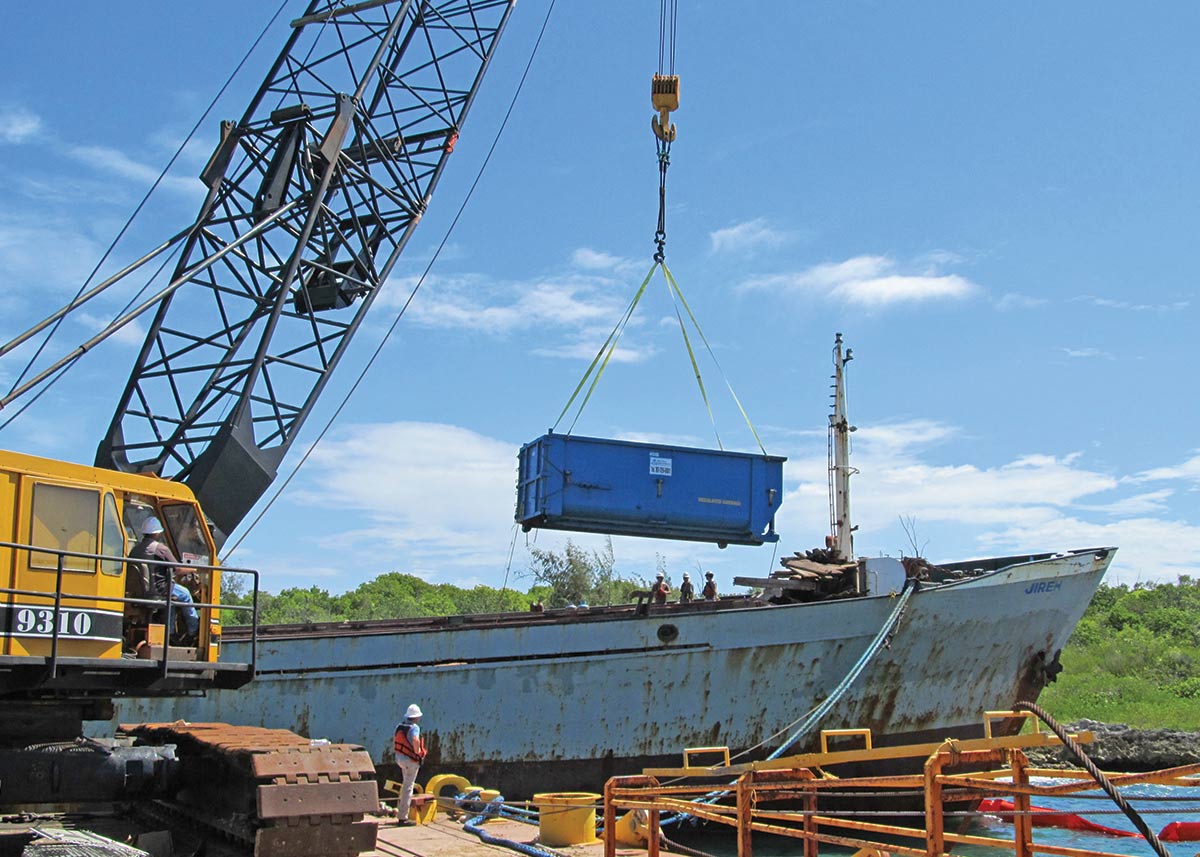
Resolve Marine Group
Nielsen says NRC’s cleanup efforts are performed by project teams with decades of experience and include all the necessary equipment. The company provides dockside, shoreside, and floating equipment such as landing crafts and barges. It also supplies packaging, liners, containers, and all the required covers and containment devices to prevent further environmental exposure or release. “Our seasoned professionals provide the necessary shipping paperwork and oversee all transportation of wastes from the project site to one of our treatment and disposal facilities,” Nielsen says. “Our extensively trained and experienced professionals work closely with regulators to ensure proper disposal of all materials.”
Environment organizations use a variety of maintenance and preventative measures to minimize marine debris in Alaska. NRC has an extensive approach to addressing these areas. As part of its maintenance, preventative, and emergency response program, the company offers US Coast Guard regulatory compliance for vessels, barges, facilities, terminals, exploration and production, pipelines, railroads and government agencies. “With experience from performing 10,000-plus responses annually, we offer convenience and reduced risk with single-source solutions,” Nielsen says. “We work together with our customers from initial mobilization to final closeout to ensure we effectively handle all their response and disposal needs.”
He adds: “We provide nationwide coverage from 125-plus locations throughout North America with extensively trained, certified, and experienced crews led by safety and regulatory compliance professionals. Our professionals ensure the best available resources and 24/7 response capabilities to cover any type of emergency of any scale, from small spills to catastrophic events.”
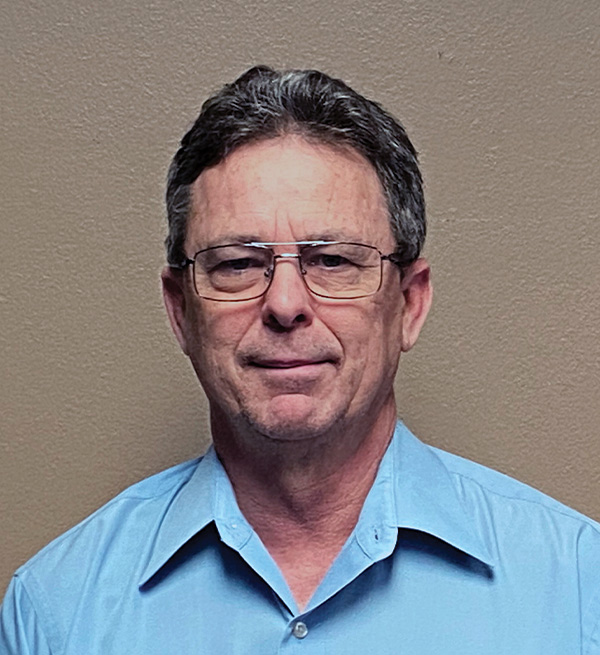
Resolve Marine Group
Alaska Chadux Network supports a monitoring center as part of its preventative measures. This involves examining all vessel movements that are happening in Alaska using tracking software. These efforts are facilitated through Marine Exchange Alaska, which Alaska Chadux Network funds. “We can detect anomalies of large shipping vessels,” Custard says. “We can engage them to see if they have a mechanical problem or not, then we can help them get the right resources to mitigate the problem. We make sure all the appropriate agencies and response organizations are aware of a developing situation. Fortunately, most of the incidents are non-events. But it’s because of this vigilance that we have averted major disasters.”
In addition, Alaska Chadux Network helps vessels that are caught in storms and have to deviate from their route. “That’s very important for the safety of the ship and crew, but it’s also about the cargo,” Custard says.
When Resolve Marine addresses a significant marine casualty, such as if a fishing vessel sinks or goes aground, it goes to great lengths to ensure all fishing nets and other debris are collected. “Our crews spend a lot of time walking the shoreline making sure all the lifeboats, Styrofoam, and other debris get picked up,” Duke says. “We have an environmental department that focuses on dealing with waste streams and making sure that any of our processes get disposed of properly.”
The company also has a not-for-profit company, Mission Resolve, whose main focus is environmental education. “We’re constantly trying to educate the industry about their footprint, about properly disposing of things, taking care of your trash,” Duke says. “Just dumping offshore will not deal with the problem because it can wash back to the shore.”
Global Diving and Salvage
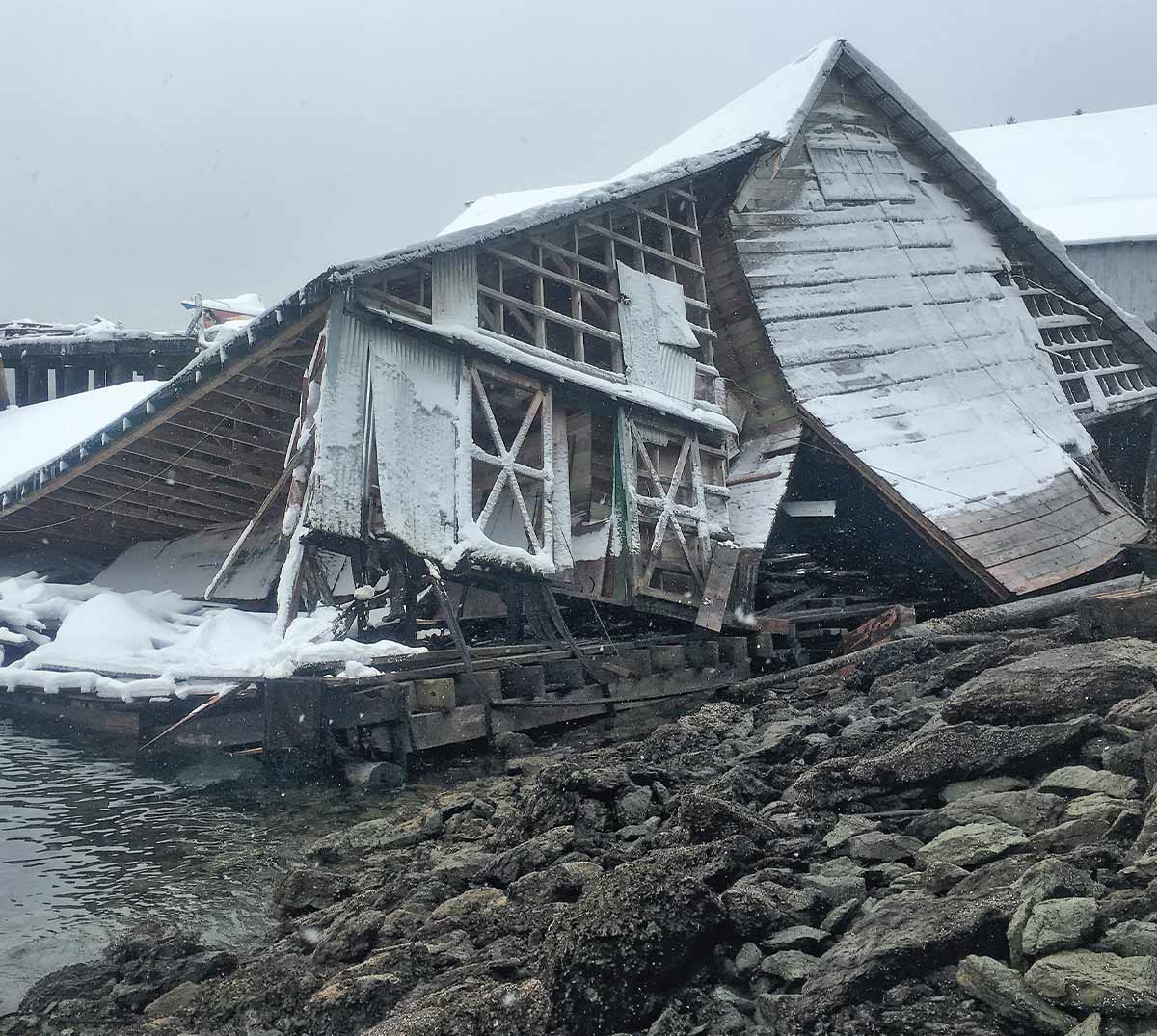
Global Diving and Salvage
Mission Resolve also has a humanitarian mission. For example: the nonprofit sent a barge with a water purification plant to Freeport, Bahamas to ensure people there had clean drinking water after Hurricane Dorian hit several years ago. Mission Resolve is also a member of several environmental associations. “It’s our way of giving back,” Duke says. “Our slogan is to leave the world a better place. We’re very much for making that happen.”
Alaska’s environmental companies work under different types of contracts and use different metrics to gauge their success. Resolve Marine, for example, has held a federal contract with the US Coast Guard since 1995. It’s a basic ordering agreement to cover time and material. “We only get paid when there is an actual incident,” Duke says. “It’s pre-negotiated rates for people and equipment.”
The company does one-off contracts for work that involves addressing the day-to-day issues that happen around Alaska. And for shipping businesses, which are required to maintain a vessel response plan, Resolve Marine offers “evergreen” contracts. Duke explains: “We’re named as their responder, and they pay a small fee every year. If there is a response, there is another contract that’s generated for the appropriate response.”
Resolve Marine Group
Alaska Chadux Network also uses various agreements with its customers, including longer-term, standing contracts for response vessels. And recently, it established a contract to provide marine mammal cleanup for Seward’s Alaska SeaLife Center. The company also has logistics contracts, which can be critical. “Alaska is so large and remote that most response and cleanup requires extensive logistics expertise,” Custards says. “It’s about getting people to the spot and getting the debris out there.”
At NRC, most of the agreements are ongoing contracts that automatically renew from year to year. This ensures that its customers continuously remain in compliance with US regulations and the requirements cited in their response plan certification statements. “Many of our agreements have a defined term (generally three to five years) and also include an evergreen clause for the continuation of services per annum,” Nielsen says.
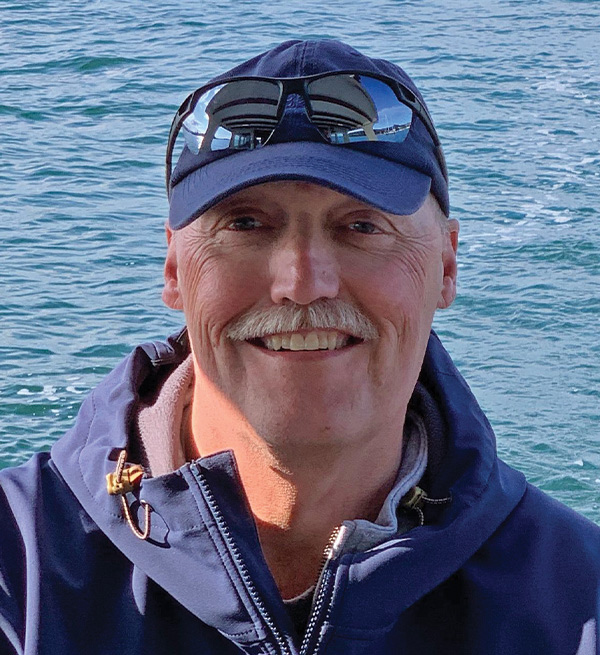
Alaska Chadux Network
NRC uses qualitative and quantitative data for its customer success metrics. The quantitative metrics include renewal rates, customer retention, churn rate, and customer health scores. Qualitative metrics relate to evaluating customer satisfaction and client feedback. “This data helps promote a positive customer experience, strategies and decision-making, operational efficiency, business unit performance, and growth,” Nielsen says.
Resolve Marine uses international statistics that typically relate to the amount of oil recovered. “We look at the number of casualties every year, how much oil was spilled and how much was recovered,” Duke says.
For Alaska Chadux Network, measuring the effectiveness of a cleanup project involves completing visual inspections and inspections to the soil—and not just the soil on the surface. Custard says: “The goal is to return the impacted site to its original form prior to the impact… We work very closely with the state and federal government in assessing whether a site has been cleaned up.”
Marine industrial debris is not just a local or Alaska issue, Custard says. It requires public- and private-sector agencies working together to address the problem. “I’m optimistic,” he says. “If we want to resolve it, we have the capacity to do it. We just have to be disciplined to make it happen.” ![]()